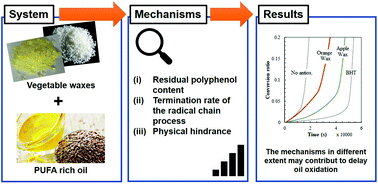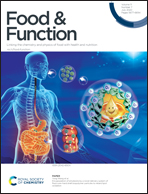Inhibition of lipid autoxidation by vegetable waxes
Abstract
This study aims to evaluate the effect of vegetable waxes on the kinetics of lipid oxidation of linseed oil. Apple and orange waxes were obtained using supercritical carbon dioxide. The capacity of waxes to inhibit or retard the oxidation of linseed oil was determined by isothermal calorimetry at 298 K. The results show that waxes were able to slow down linseed oil autoxidation, with apple waxes being more active than orange waxes. However, such activity was visible only at relatively high concentrations (>1% of waxes), greatly higher than the concentration used with radical chain breakers like BHT (0.2%). The inhibition activity was explained by considering three different mechanisms: (1) residual polyphenol content in the wax, (2) high termination rate of the radical chain process, and (3) physical hindrance of the oxidation process by change in viscosity. All these mechanisms were possible, although the latter seemed to be the most important. Finally, the importance of waxes in the inhibition of lipid autoxidation was determined by testing their inhibition activity in combination with primary antioxidants. A mixture of waxes with BHA, ethoxyquin and α-tocopherol showed a higher rate of inhibition than when present individually. This suggested a strong cooperative radical scavenging activity, whose beneficial effect might pave the way to the formulation of novel functional ingredients.



 Please wait while we load your content...
Please wait while we load your content...